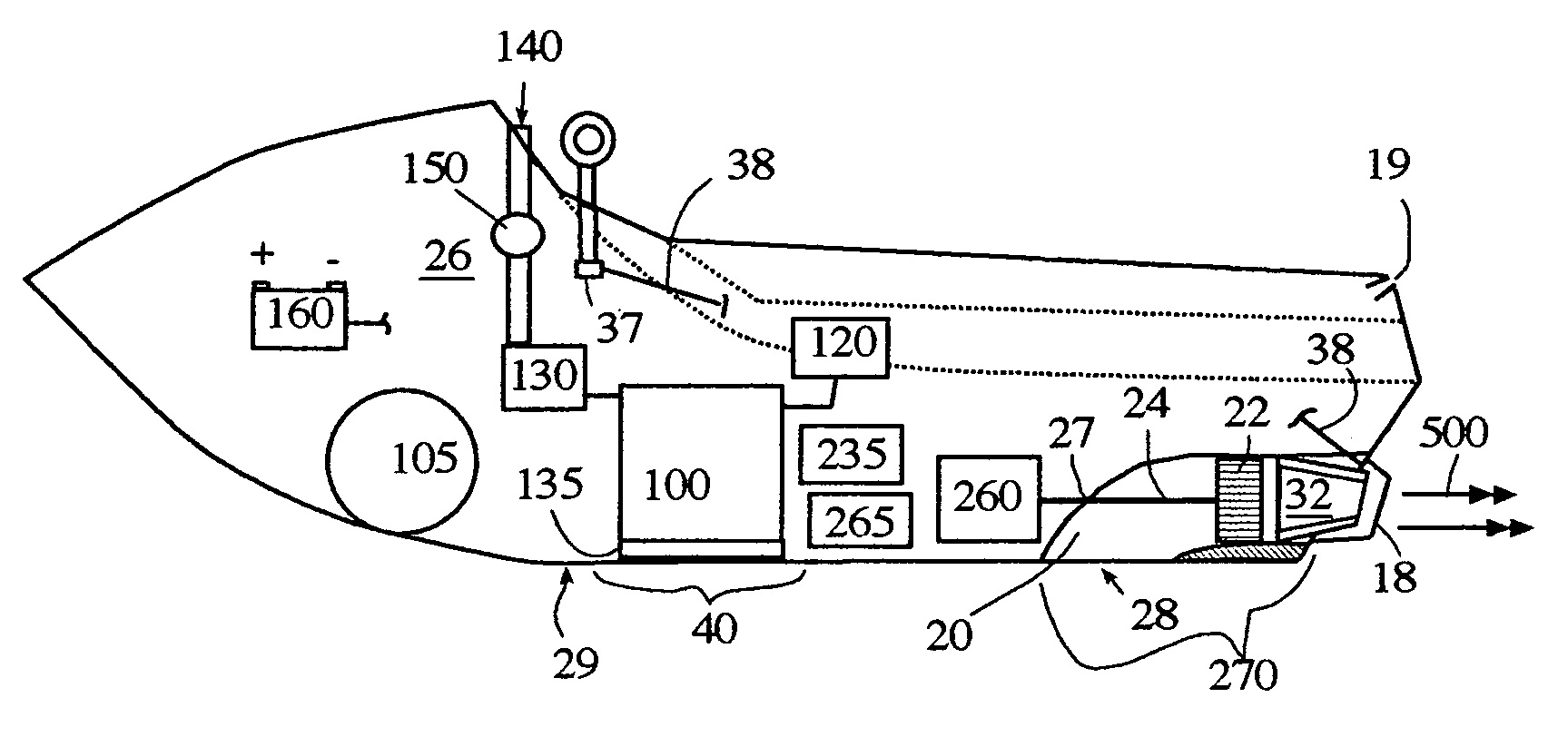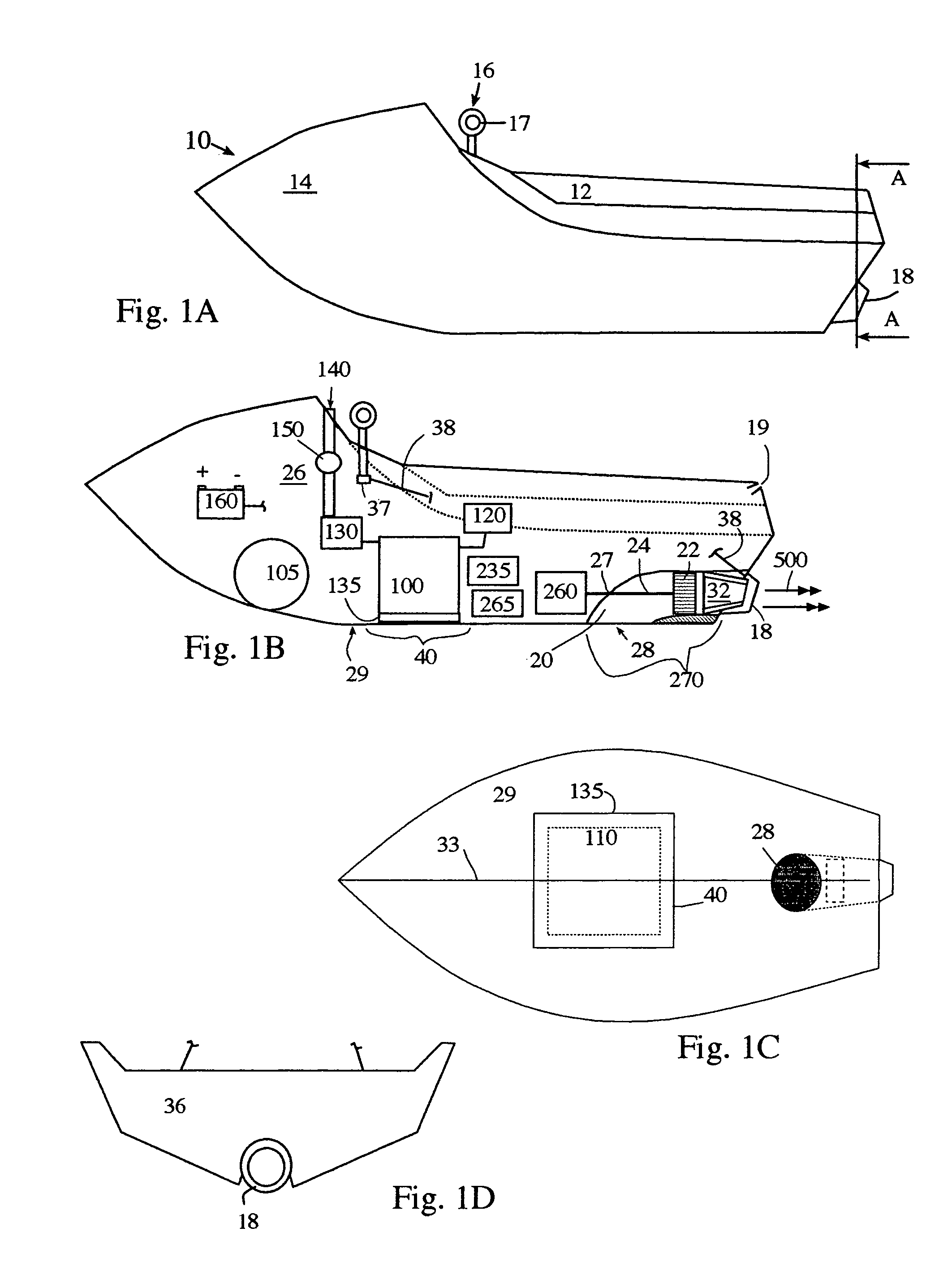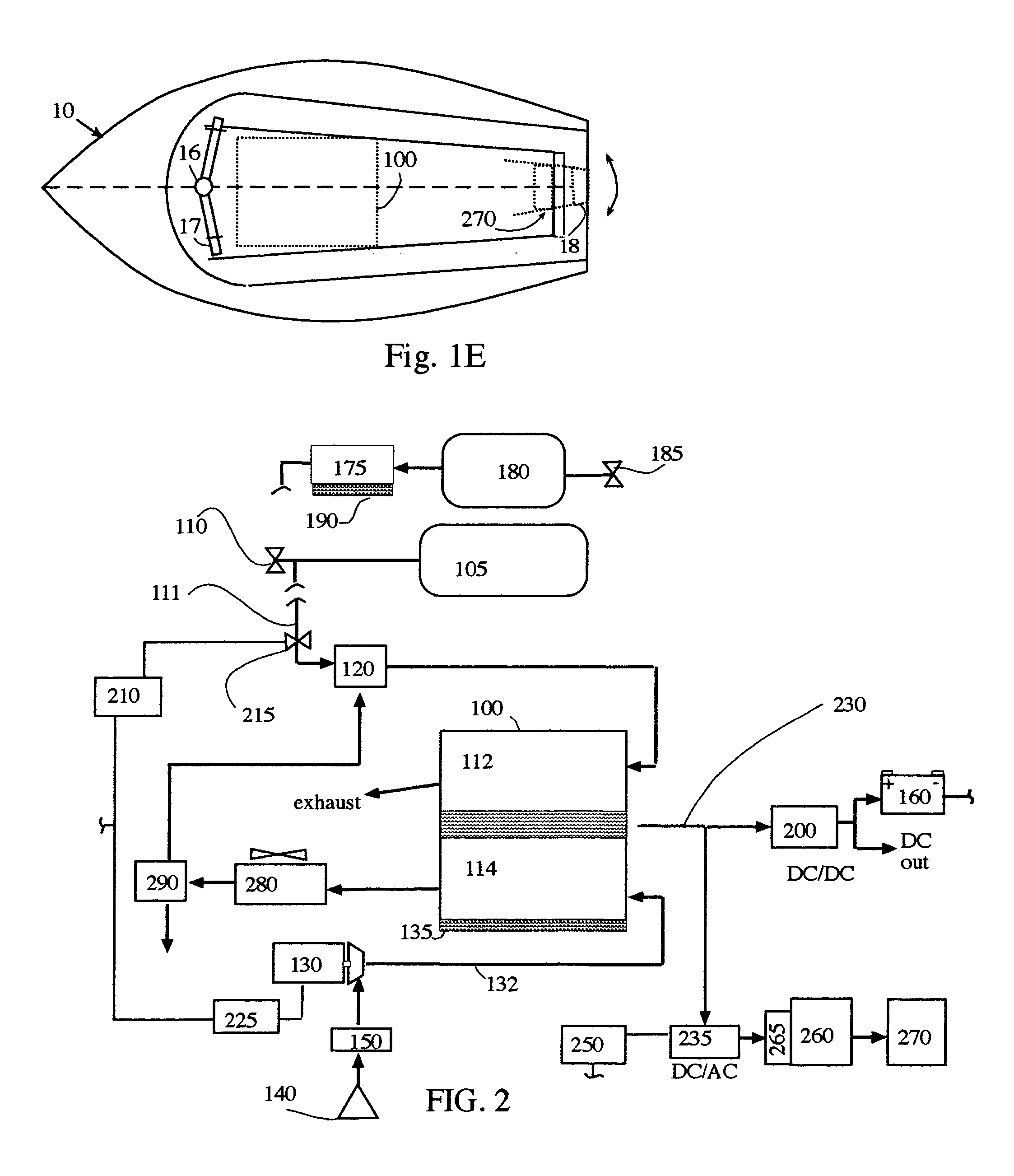Electric water crafts
a technology for watercraft and electric power, applied in marine propulsion, power plants using fuel cells, vessels, etc., can solve the problems of limited use of pwc, limited hull space for electronics, fuel and propulsion systems, and limiting the use of pwc, so as to reduce the temperature of other components within the hull and reduce the interior hull temperature
- Summary
- Abstract
- Description
- Claims
- Application Information
AI Technical Summary
Benefits of technology
Problems solved by technology
Method used
Image
Examples
Embodiment Construction
[0049] Detailed embodiments of the present invention are disclosed herein; however, it is to be understood that the disclosed embodiments are merely exemplary of the invention, which may be embodied in various forms. Therefore, specific structural and functional details disclosed herein are not to be interpreted as limiting, but merely as a basis for claims and as a representative basis for teaching one skilled in the art to variously employ the present invention in virtually any appropriately detailed structure.
[0050] Shown in FIGS. 1A-1E is an electric water craft “EWC”10. The EWC shown has a seat 12 raised above a hull 14, the hull 14 has hollow portions therein. A handle bar on a support 16 provides a hand hold for a rider. A hand grip control 17 can be mounted on the handle bar on a support 16. The hand grip control 17, in this embodiment, is a substantially a motorcycle-type hand throttle which is well known in the art. The hand grip control 17 is used for speed control.
[005...
PUM
 Login to View More
Login to View More Abstract
Description
Claims
Application Information
 Login to View More
Login to View More - Generate Ideas
- Intellectual Property
- Life Sciences
- Materials
- Tech Scout
- Unparalleled Data Quality
- Higher Quality Content
- 60% Fewer Hallucinations
Browse by: Latest US Patents, China's latest patents, Technical Efficacy Thesaurus, Application Domain, Technology Topic, Popular Technical Reports.
© 2025 PatSnap. All rights reserved.Legal|Privacy policy|Modern Slavery Act Transparency Statement|Sitemap|About US| Contact US: help@patsnap.com



